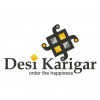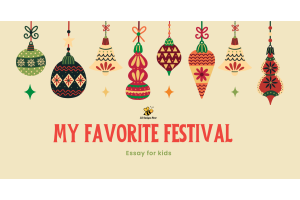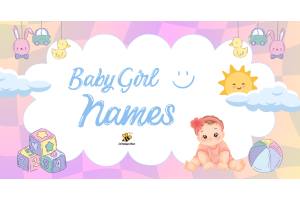Wooden Toys
-
May 10, 2025 12
Welcome to Lil Amigos Nest, your trusted partner in nurturing your child’s growth and development! We know that playtime is more than just fun—it’s a vital part of learning. That’s why we proudly offer the best educational toys and games online in India, designed to spark young minds and build essential skills. Our collection includes toys that inspire creativity, like arts and craft books, and others that boost motor skills, such as car toys and toy vehicles. Whether you’re looking for learning games to challenge your child’s thinking, puzzles to sharpen their problem-solving, or simply the best toys online, we’ve got it all at Lil Amigos Nest!
We’re confident in the power of play to shape your child’s future. Our wide range of educational toys meets every child’s unique needs, from learning toys
-
September 23, 2024 11270
In an era of flashy, battery-powered, and tech-driven toys, wooden toys may seem simple by comparison. However, they offer something far more valuable for a child’s development—unlimited opportunities for imaginative play and creativity. Unlike toys that come with specific instructions or predefined uses, wooden toys allow children to create their own worlds, stories, and adventures. Here's how wooden toys foster imaginative play and encourage creativity in children.
1. Open-Ended Play: No Rules, Just Possibilities
One of the key ways wooden toys promote creativity is through open-ended play. Unlike toys with fixed functions, wooden toys don’t dictate how they should be used. For instance, a set of wooden blocks can become a castle, a car, or a rocket ship, depending on the child’s imagination.
This open-ended nature gives children the freedom to invent their own play scenarios, which is crucial for cognitive development. They learn to think creatively, problem-solve, and come up with unique ways to use the toys at hand, expanding their minds and imaginations.
2. Simplicity Stimulates Creativity
In contrast to plastic toys that often come with bright lights, sounds, and other features that capture a child's attention, wooden toys are typically simpler. This simplicity is their strength. Without the distractions of electronic gadgets or automated functions, children are encouraged to actively engage with the toy.
A simple wooden car or dollhouse requires the child to fill in the gaps with their own ideas. This form of play nurtures independent thinking and allows children to create entire worlds from their own minds, rather than relying on the toy to entertain them.
3. Versatility in Design
Wooden toys are incredibly versatile. For example, a set of wooden figures can be knights one day and zoo animals the next. A wooden dollhouse can become a school, a hospital, or even a space station depending on what the child decides. This versatility sparks new ideas every time the child picks up the toy, encouraging them to experiment with different roles, characters, and scenarios.
Additionally, wooden toys often come in basic shapes and forms, leaving much to the child’s imagination. A plain wooden block can be anything the child wants it to be—a bridge, a skyscraper, or even a cake in a pretend bakery. This flexibility helps foster creativity and allows children to explore endless possibilities.
4. Tactile Experience Enhances Learning
Wooden toys offer a tactile experience that enhances both learning and creativity. Their natural texture and weight encourage children to feel, touch, and explore, which is important for sensory development. The act of physically manipulating wooden toys—stacking blocks, fitting puzzle pieces together, or moving wooden cars—stimulates the brain and encourages hands-on learning.
This hands-on interaction allows children to better understand shapes, sizes, and spatial relationships, which not only helps with cognitive development but also sparks creativity as they learn to build, create, and imagine.
5. Encouraging Storytelling and Role-Playing
Wooden toys, especially figures and dolls, are excellent tools for encouraging storytelling and role-playing. Children can invent characters, create dialogues, and build stories around their toys. For example, a wooden kitchen set can turn a child into a chef preparing meals for their dolls or stuffed animals. Wooden animals can lead to adventures in jungles or zoos, limited only by the child’s imagination.
These storytelling exercises are more than just fun—they help children develop language skills, social understanding, and emotional expression. Role-playing also allows children to explore real-world scenarios and solve problems in a safe, creative environment.
6. Promoting Independent Play
Wooden toys encourage independent play, where children engage in play without constant input from adults. With wooden toys, children are free to explore their imaginations without needing to follow specific rules or instructions.
This independent exploration helps boost a child's self-confidence and decision-making abilities. It teaches them to rely on their own ideas and instincts, fostering a sense of autonomy that is crucial for personal growth. As children create and play on their own, they develop problem-solving skills and learn to entertain themselves in imaginative ways.
7. Sustainable and Natural Connection
Beyond their role in imaginative play, wooden toys also introduce children to natural materials. The texture, smell, and even the sound of wooden toys are different from synthetic alternatives. This connection to natural elements fosters a sense of curiosity and appreciation for the environment.
In addition, wooden toys are often produced sustainably, which sets a great example for children to learn about eco-conscious living. When children play with toys made from natural materials, they develop a closer connection to nature and begin to understand the importance of sustainability.
8. Minimalist Design, Maximum Creativity
The minimalist design of wooden toys removes unnecessary distractions and leaves more room for a child’s creativity to flourish. While modern toys may come with flashing lights or pre-recorded phrases, these often restrict the ways children engage with them.
Wooden toys encourage children to invent their own play scenarios, engage their problem-solving skills, and use their creativity to find new ways to interact with the toys. This simplicity allows the child to be the creator of their play experience rather than just a passive observer.
Conclusion
Wooden toys are more than just simple playthings—they are powerful tools that encourage children to unleash their imaginations and creativity. With no predefined roles or rules, these toys give children the freedom to explore, create, and invent, helping them develop essential cognitive, social, and emotional skills.
By offering tactile, open-ended experiences that spark curiosity and promote independent play, wooden toys provide endless opportunities for creative exploration. So, the next time you’re looking for toys that will truly benefit your child, consider choosing natural, durable wooden toys that will inspire their imagination for years to come.
In an era of flashy, battery-powered, and tech-driven toys, wooden toys may seem simple by comparison. However, they offer something far more valuable for a child’s development—unlimited opportunities for imaginative play and creativity. Unlike toys that come with specific instructions or predefined uses, wooden toys allow children to create their own worlds, stories, and adventures. Here's how wooden toys foster imaginative play and encourage creativity in children.
1. Open-Ended Play: No Rules, Just Possibilities
One of the key ways wooden toys promote creativity is through open-ended play. Unlike toys with fixed functions, wooden toys don’t dictate how they should be used. For instance, a set of wooden blocks can become a castle, a car, or a rocket ship, depending on the child’s imagination.
This open-ended nature gives children the freedom to invent their own play scenarios, which is
-
September 20, 2024 11274
In today’s world of mass-produced plastic toys, wooden toys are making a strong comeback. Parents are increasingly drawn to the simplicity, durability, and eco-friendliness of wooden toys. But what exactly makes wooden toys a better choice for children? Let’s explore the key reasons why going natural is beneficial for both kids and the environment.
1. Safety First: Non-Toxic and Chemical-Free
One of the biggest concerns with plastic toys is the potential presence of harmful chemicals like BPA, phthalates, and PVC. These chemicals can pose health risks, especially for young children who tend to put toys in their mouths.
Wooden toys, on the other hand, are typically made from natural, non-toxic materials. High-quality wooden toys are finished with non-toxic paints, oils, or lacquers, making them a much safer option for children.
-
August 20, 2024 13251
Children learn best through play, and the right toys can significantly enhance their developmental journey. Educational toys not only provide hours of fun but also help children develop essential skills such as cognitive abilities, motor skills, social interactions, and emotional intelligence. In this blog, we’ll explore various kids toys that are designed to boost your child's development and make learning an enjoyable experience.
The Importance of Educational Toys
Educational toys are designed with specific learning outcomes in mind. They stimulate curiosity, foster creativity, and encourage problem-solving. By engaging children in purposeful play, these toys help build a strong foundation for future learning and development. Here are some key benefits of educational toys:
- Cognitive
-
August 17, 2024 11277
In today's world, more parents are looking for ways to provide their children with eco-friendly and sustainable options. Choosing eco-friendly toys for kids not only helps protect the environment but also ensures that children are playing with safe, non-toxic materials. In this blog post, we’ll explore some of the best sustainable toys for kids, highlighting their benefits and why they are a great addition to any toy collection.
Why Choose Eco-Friendly Toys for Kids?
Eco-friendly toys are made from sustainable materials such as wood, bamboo, organic cotton, and recycled plastics. These materials are safer for children, reducing their exposure to harmful chemicals found in many conventional toys. Additionally, sustainable toys often come from companies committed to ethical practices, such as fair labor and minimal environmental impact. By choosing eco-friendly kids toys, parents can teach their


























